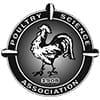Raising hens? Bring on the cloudy days! - Interpretive Summary
Published: January 5, 2023
By: https://poultryscience.org/
by Sam Shafer
Poultry scientists find hens prefer lower UVA/B light
A new Poultry Science® study suggests hens do like sunlight—just not too much. In fact, by monitoring hen behavior under different strengths of UVA and UVB light, the researchers found that hens prefer to spend more time in lower levels of UVA/B light.
“Hens also showed more foraging, ground pecking, and preening at the low intensity of the UVA/B light, suggesting hens were more comfortable and motivated to express active hen-typical behaviors (cf. sitting or standing) under this type of light,” write study authors Rana et al.
Poultry producers have long known that access to sunlight can improve hen physiology, behavior, production, and welfare. Hens reared in indoor settings are even given artificial light to boost their health and performance.
The new research, led by a team of Australian scientists, brings poultry scientists closer to understanding how to optimize lighting in the industry.
Why look at UVA/B and visible light separately? It comes down to hen eye anatomy. Hens eyes are equipped with a fourth retinal cone that allows them to see wavelengths of UVA and UVB light invisible to the human eye. In previous studies, researchers have shown that hens prefer some UVA light.
“Typically, assessment of sources for artificial illumination in intensive commercial layer farms have been based on perception via human vision, but a chicken's visual perception is different,” write the study authors.
The 108 hens in this experiment were tested for 2 hours each in a pen that had a treatment compartment and a control compartment. The two areas were connected by a tunnel, and the hen could choose which side to visit.
The researchers found that hens spent more under the low UVA/B light and the low intensity visible light. Hens under the lower UVA/B and visible light settings also spent more time foraging, ground pecking, and preening. These findings are in line with previous studies showing free range hens range more when weather is “calm and dull” versus bright and sunny.
The new findings are especially relevant for poultry producers in Australia, where free range systems are growing in popularity and the sunlight has a high UV index.
The researchers recommend follow-up studies in a free range setting. “UVA/B light (sunlight) may have positive effects for hen range use, but during peak sun intensities, hens may need additional measures (e.g., shelter) to protect themselves,” they write.
What does this study mean for producers?
- Hens are willing to spend more time in lower light compared with brighter UVA/B light and visible light.
- Differences in eye anatomy mean hens are very sensitive to UVA and UVB light. A light intensity that seems moderate to a human eye may be more intense to a hen.
- Giving hens access to shade is about more than helping them cool down. The lower light may also encourage more positive natural behaviors.
The full paper, titled “Preference testing for UV light spectrum and intensity in laying hens,” can be found in the Poultry Science and online here.
DOI: 10.1016/j.psj.2021.101063
Source
https://poultryscience.org/Related topics:
Authors:

Recommend
Comment
Share

Would you like to discuss another topic? Create a new post to engage with experts in the community.



